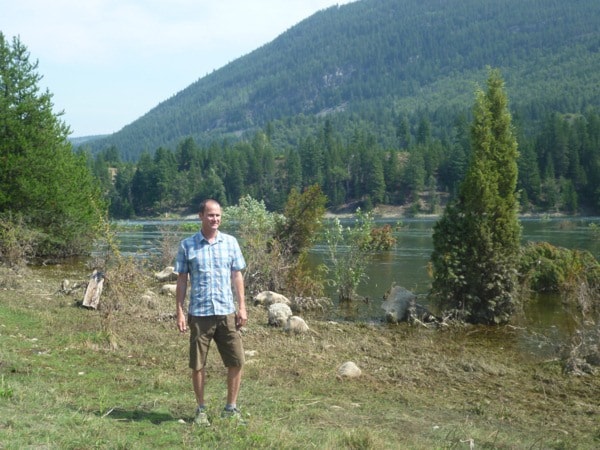By Grace Pickell
This year’s higher than normal snowpack, precipitation and runoff in the Columbia Basin led to some challenging circumstances, but for the Columbia River ecosystem it may be a welcome change.
“From an ecological perspective, rivers can potentially benefit from high water levels,” said James Baxter, Natural Resource Specialist at BC Hydro. “High flows can add additional nutrients into the waterscour and clean sediments from the river bottom, and add habitat in terms of large woody debris and new channel features. “
Most fish don’t live in the middle of a river; they live near the shoreline where there is lots of food, debris, and cover to hide under – so when the river floods, water spreads out over the land and creates more places for fish to live. Even after the water levels recede, the high flows will have changed the shape of the river and likely created new habitat.
During the period of high flows on the Columbia River this year, BC Hydro carefully monitored the environmental impacts of the flow changes. In order to manage the high levels on Arrow Lakes reservoir, BC Hydro had to pass significant flows through the Hugh L. Keenleyside Dam. When floods or droughts occur in a river that hasn’t been dammed, the water levels can change quite drastically. On a dammed river, however, the flow changes can be managed and the impacts on the river’s ecosystem are taken into consideration. For example, when the discharge from Hugh L. Keenleyside Dam was eventually reduced, the change was made over three days rather than one. This pattern of flow decrease, called flow ramping, is a proven technique to reduce impacts, and allowed fish to swim to deeper water and avoid being stranded.
In addition to these precautions, BC Hydro has also implemented a flow reduction strategy. This means that as water levels drop, BC Hydro will be out monitoring the river and assessing potential impacts on fish.
“In both natural and dammed rivers fish can become stranded when water levels drop and pools are created that are cut off from the river. To address this issue we try to make flow reductions that limit stranding, and where needed will actually salvage fish and return them to the river” said Baxter.
